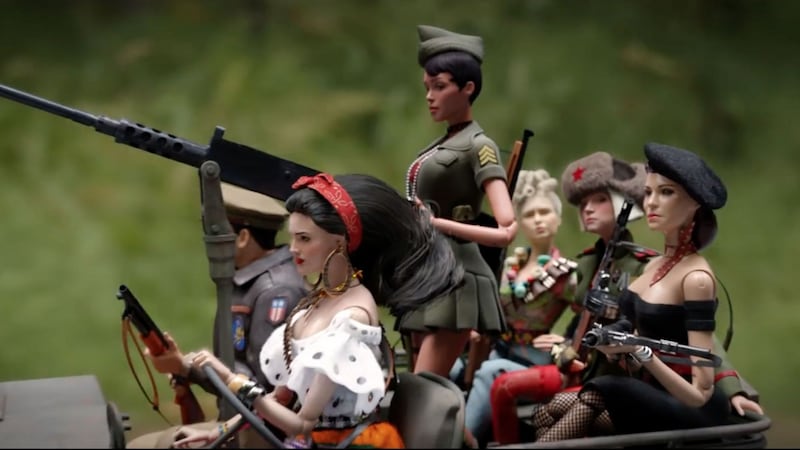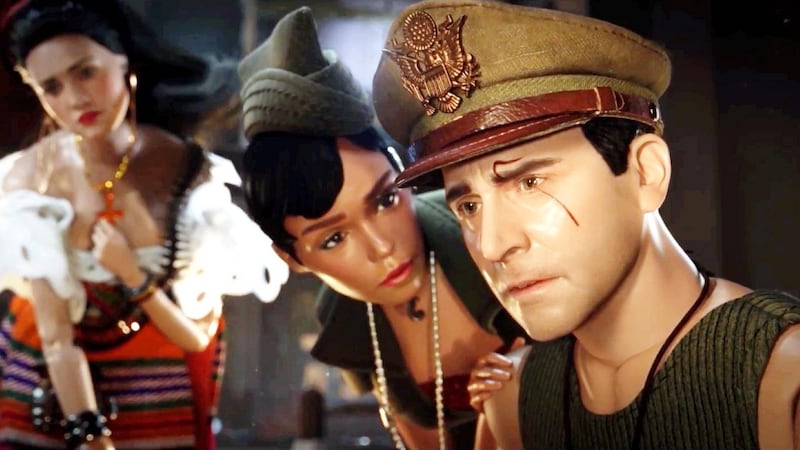Robert Zemeckis chuckles. "I've been asked that question by just about every journalist I've met."
Not for the first time– not even for the first time today – Zemeckis, who directed Back to the Future and its two sequels, is insistent that the film will never be remade or revisited during his lifetime.
"That question will follow me my whole life," says the Oscar-winning director of Back to the Future, Cast Away and Forrest Gump.
“But I understand what the audience is saying. They’re saying we love these movies so much we’d like to see more. And I appreciate that. It’s wonderful. But they haven’t thought it through. All the actors are 35 years older. The mentality of the 1980s is no longer part of our consciousness. So we wont be able to make the movie with the same spirit or the same energy. Everyone would ultimately be disappointed.”
At 66, with 19 feature films to his credit, Zemeckis is accustomed to the cut and thrust of the studio system. The trilogy that will not be rebooted was passed over by Disney back in the day, because studio executives were unnerved by the incestuous subplot between Marty McFly and his mother. That studio was not alone.
“You know studio conversations,” he says. “They worry about absolutely everything.”
I can only imagine the chats he had to get Welcome to Marwen past the gatekeepers.
Zemeckis had missed the opening credits and minutes on a 2010 PBS broadcast of Jeff Malmberg's documentary Marwencol, but, even late to the party, he was completely transfixed. He called Universal Pictures chairman Donna Langley the very next day, hoping to secure rights to the story. Marwencol, which has subsequently won dozens of awards, chronicles the strange, artistic life of Mark Hogancamp.

Cross-dresser
On April 8th, 2000, five men almost beat him to death outside a bar upon learning that Hogancamp was a cross-dresser. After nine days in a coma and 40 days in the hospital, he was discharged with brain damage that left him with no memories of his marriage, his army service, or how to eat. Unable to afford therapy, Hogancamp found solace in building a 1/6-scale second World War-era Belgian town in his backyard and populating it with dolls representing himself, his friends, and his attackers.
“The thing that attracted me to the project was this notion of the healing power of art,” says Zemeckis. “The fact that Mark was compelled to create these photographs. I loved how hopeful that was. Then I thought, well, there are these elaborate stories that are only in Mark’s mind happening in the doll world that he can capture only in photographs. I thought now that is how we make this into a movie if we can present what’s happening in the doll world to the audience.”
Zemeckis' feature casts Steve Carell in the central role with an impressive female cast – including Leslie Mann, Diane Kruger, Janelle Monáe, Eiza González, and Gwendoline Christie – as Hogancamp's skimpily-clad Nazi resistance movement.
Zemeckis, Carell and the production team were careful to maintain an ethical approach to their subject, who has after all, experienced a life-changing head injury.
“It’s interesting,” says Zemeckis. “Because Mark was extremely respectful of my process. He was amazing to work with. He understood that this is all going to be dramatised and fictionalised. It’s loosely based on his life and what happened, of course. He thought the screenplay was fantastic, and then Steve and I went and spent time with him and hung out. Steve was studying him quite a bit.”
The director insists the actors did the heavily lifting when it came to the physical restrictions of doll joints. But there’s a great deal of groundbreaking tech specs on display nonetheless.
Zemeckis has, of course, always been a showman. Just think of his literally dizzying 3D dramatisation of Philippe Petit's 1974 high-wire crossing between the North and South Towers of the World Trade Center in The Walk. Or the groundbreaking FX catfight between Meryl Streep and Isabella Rossellini in Death Becomes Her. Or the pioneering motion-capture experimentation of The Polar Express, Beowulf, and A Christmas Carol.
It’s impossible not to see some kind of analogy between Hogancamp’s dolls and the directors’ own fancier filmmaking toolbox.
“I think you can draw that analogy,” he nods. “Maybe that’s why I could understand him so well. “
Shoe fetish
The film must be the only project released by a major studio during this year’s awards season to feature a transvestite, porn-fan with a shoe fetish as the hero.
“It was always my intention that the character was human,” says Zemeckis. “He’s lonely and imperfect. It’s a dangerous thing to try to homogenise everything. I think that you have to have a certain understanding that people are people. The truth is if you’re going to do a story that’s homogenous and it’s a story that everyone will be happy with, by definition it can’t be about anything.”
He smiles: “How sad is that?”

Quite sad, but it is rather the way of things. No one would look upon Hollywood’s contemporary output and say it wasn’t homogenous.
“What are we saying?” he says. “Are we saying that we’ll have cartoons and we’ll have superhero movies and that’ll be the cinema experience, and everything else will be on television, which means that everyone has to see everything in solitude? My answer is: let’s just do new ideas,. Let’s do things that are interesting.”
He respects and admires the space Netflix has created for longform projects but is worried that the streaming giant can double as we he calls movie insurance.
“You can say we’ll watch 10 minutes of this one and then if we’re not hooked we’ll turn it off and watch this one for another 10 minutes. That’s our movie night. That’s fine for the audience because it gives them all the control. But it’s sad for the filmmaker. I would find it strange not knowing how many people have seen the movie.”
He’s equally unimpressed by the new vogue for dinner-theatre cinema: “The seats are all far away from each other and you can’t hear anybody laughing at a joke or anything. Movies are a collective experience. There’s a power of being in an audience. It would be sad if that vanished.”
Bonnie and Clyde
Reacting with an audience is how Robert Zemeckis got into movies. Growing up in a blue-collar household in Chicago, he had not been exposed to a great deal of cinema when a certain countercultural classic grabbed his attention.
"The experience that was the most profound for me was seeing Bonnie and Clyde as a teen," he recalls. "That's when I started to pay attention. That's when I noticed that my emotions were being manipulated by this film. And that's when I decided to find out how does this work? Oh, so there is a writer and a director."
His father, a Lithuanian-American woodworker, was horrified when Robert enrolled in film school. “My father’s exact quote was: are you telling me my son is going to go join the circus?”
He laughs: “But when I started to make some money, then my family were okay with it.”
That did not happen overnight, Having won a Student Academy Award at USC for his film, A Field of Honor, Zemeckis was championed by Steven Spielberg, but his first two features I Wanna Hold Your Hand (1978), starring Nancy Allen, and Used Cars (1980), starring Kurt Russell, were critical hits and commercial flops.
A project he created with Bob Gale, about a teenager who accidentally travels back in time to the 1950s, was turned down by every studio. Still, those early failures impressed Michael Douglas who hired him in 1984 to film Romancing the Stone. When that became a sleeper hit, the studios started paying attention.
Interestingly, he doubts that any of the films that made his name, including Back to the Future and Castaway, would be made now.
"They wouldn't happen, I couldn't make Castaway now. They'd say go make it for five million dollars with Tom Hanks. But they wouldn't make it on the scale it was made now. That would be way too terrifying. Movies like Welcome to Marwen are an aberration. The miracle of Welcome to Marwen is that it was made by a major studio. Which is a heavy responsibility."
Happily, that’s a sense of responsibility he intends to remain wedded to.
“I still think I still have my best movie in me somewhere. I sincerely don’t know if I’ve done my best work yet or not.”
He shakes his head: “Isn’t that funny at this age?”
Welcome to Marwen opens on January 1st











